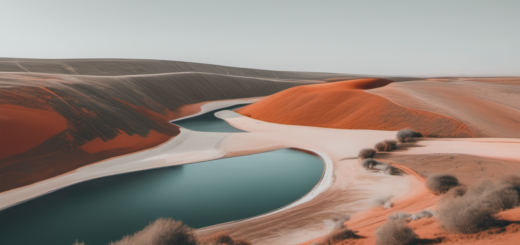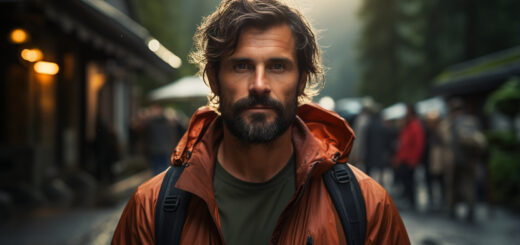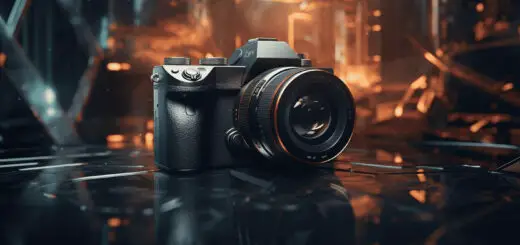The Perfect Blend: AI and Human Creativity in Photography
In the ever-evolving world of photography, the marriage of artificial intelligence (AI) and human creativity has led to a groundbreaking shift in the way we capture and appreciate images. AI, with its computational power and ability to analyze vast amounts of data, has revolutionized various industries, and photography is no exception. By leveraging AI’s capabilities, photographers can now explore new realms of creativity and expand the boundaries of what is possible.
Gone are the days when photography was solely reliant on the skill and artistic vision of the human photographer. With the advent of AI, we are witnessing a transformation in the art of capturing moments. AI has become a valuable tool, aiding photographers in enhancing their creations while preserving the essence of human ingenuity and expression.
In this article, we will delve into the inseparable relationship between AI and human creativity in photography. We will explore the current utilization of AI in photography and the advanced features it enables. Additionally, we will examine the indispensable role of human touch and perspective in the creative process. Lastly, we will discuss the perfect balance between AI and human emotions and their collective impact on the future of photography.
Join us on this fascinating journey where cutting-edge technology and human imagination merge to create a visual narrative that captivates audiences worldwide. Let’s explore how AI and human creativity converge to shape the future of photography.
Artificial Intelligence in Photography
Artificial intelligence has revolutionized various industries, and photography is no exception. With advancements in AI technology, photographers, both professionals, and amateurs, can now capture and enhance their images like never before. From automatic scene recognition to intelligent image editing, AI has transformed the way we approach photography.
Current Utilization of AI in Photography
Artificial intelligence is seamlessly integrated into many aspects of photography, enhancing the capabilities of cameras and photography software. Here are some of the current applications of AI in photography:
- Scene recognition: AI algorithms can analyze the content of a scene and automatically adjust camera settings for optimal results. Whether it’s recognizing landscapes, portraits, or even food photography, AI algorithms can help photographers capture the perfect shot with minimal effort.
- Image enhancement: AI-powered image editing tools can automatically enhance photographs by adjusting colors, contrast, and brightness. These tools analyze the image content and make intelligent adjustments to bring out the best in every photo. They can even remove unwanted objects or improve skin tones in portraits.
- Smart auto-focus: AI algorithms can track and focus on moving subjects, ensuring sharp and clear images in fast-paced situations. This feature is particularly useful in sports photography or wildlife photography, where capturing the perfect moment is vital.
- Automated post-processing: AI can assist photographers in the post-processing stage by automatically applying filters, cropping images, or even creating stunning compositions. These tools not only save time but also provide creative inspiration and suggestions to enhance the overall look and feel of the photographs.
Advanced Features Enabled by AI
Beyond the current utilization, AI has been pushing the boundaries of what’s possible in photography. Here are some advanced features enabled by AI:
- AI-predictive framing: AI algorithms can predict the movement of subjects in real-time and recommend the best framing options for capturing action shots. This feature is a game-changer for sports and wildlife photographers, who can now capture the decisive moment with precision and accuracy.
- Super resolution: AI-based super-resolution algorithms can intelligently upscale low-resolution images without sacrificing image quality. By analyzing patterns and details, these algorithms can add missing information and produce high-quality, detailed images.
- Style transfer: AI algorithms can analyze the style of famous photographers or artistic movements and apply that style to images. This allows photographers to create unique and visually striking images that mimic the aesthetics of their favorite artists.
It’s evident that AI has transformed the photography landscape, making it more accessible, efficient, and creative than ever before. Whether you’re a professional photographer or simply passionate about capturing moments, AI-powered tools and features offer exciting possibilities for exploring your artistic vision. Embrace the power of AI in photography and unlock new levels of creativity with every click of the shutter.
Human Creativity in Photography
Introduction:
Photography is an art form that has evolved significantly over the years due to technological advancements. The rise of artificial intelligence (AI) has brought about new possibilities in the field of photography. However, despite these advancements, the human element remains vital in creating truly captivating and emotionally resonant photographs. In this article, we will explore the role of human touch and perspective in photography and discuss the unique aspects of human creativity in this artistic medium.
Role of Human Touch and Perspective
While AI-powered cameras and editing software have greatly improved the technical aspects of photography, they still lack the innate creativity and emotional depth that only humans can bring to the craft. Here are a few reasons why the human touch and perspective are crucial in creating compelling photographs:
- Emotional Connection: The ability of a photographer to connect emotionally with their subject is what sets human-created photographs apart. Whether it’s capturing the joy in a child’s smile or the vulnerability of a person in distress, human photographers have a unique understanding of how to portray emotion in their images.
- Intuition and Timing: Photography is all about capturing the right moment, and only a human photographer can possess the intuition and timing required to seize that perfect shot. Deciding when to press the shutter and anticipating the fleeting expressions or actions of the subjects requires a level of intuition that AI cannot replicate.
- Creative Vision: Human photographers bring their own unique creative vision to every shot they capture. They have the ability to envision an image and bring it to life, using composition, lighting, and framing techniques to create a visually striking and thought-provoking photograph. AI may be able to analyze data and mimic certain artistic styles, but it lacks the imaginative thinking of a human photographer.
- Interpretation and Storytelling: Every photograph tells a story, and it is the human photographer who adds their interpretation and storytelling ability to bring the narrative to life. They have the power to capture the essence of a moment and convey it through their composition and choice of subject, enabling viewers to connect with the image on a deeper level.
Unique Aspects of Human Creativity in Photography
Human creativity in photography goes beyond just capturing appealing images. It involves expressing emotions, evoking empathy, and challenging perspectives. Here are some unique aspects of human creativity that make their photographs stand out:
- Subjectivity: Human photographers are not bound by rules or algorithms. They have the freedom to explore unconventional angles, experiment with different styles, and express their unique viewpoint. This subjectivity adds depth and authenticity to their photographs, making them more relatable to viewers.
- Empathy and Connection: Human photographers have the ability to establish a connection with their subjects, allowing them to capture genuine emotions and tell compelling stories. Their empathy enables them to understand the human experience and convey it through their images, fostering a deep emotional connection with the viewers.
- Intentional Imperfections: Perfectly flawless images might be appealing, but sometimes it is the intentional imperfections that make a photograph truly memorable. Human photographers understand the power of imperfections, whether it’s capturing natural light flares, embracing film grain, or purposefully incorporating unconventional elements. These imperfections add character and soul to the photograph, creating a unique visual experience.
- Evolution and Adaptability: Humans have the ability to continuously learn, grow, and adapt in their creative pursuits. As technology advances, human photographers are quick to incorporate new techniques and tools into their workflow while still maintaining their distinct artistic style. This adaptability ensures that human creativity in photography remains relevant and ever-evolving.
In conclusion, although AI has undoubtedly expanded the technical capabilities of photography, the human touch and perspective remain irreplaceable. Human photographers bring their emotions, intuition, creativity, storytelling, and unique perspective to create photographs that resonate with viewers on a deeper level. The combination of technical advancements and human creativity paves the way for an exciting and dynamic future in the world of photography.
AI and Human Creativity: The Symbiosis in Photography
Photography is a powerful medium that allows us to capture and preserve moments, emotions, and stories. It’s a form of art that requires both technical skills and creative vision. And now, with the rise of artificial intelligence (AI), photography is experiencing a transformative shift. AI has the potential to enhance human creativity and push the boundaries of what is possible in this visual art form.
Enhancement of Human Creativity with AI in Photography
AI technology in photography offers a wide range of tools and functionalities that can assist photographers in their creative process. From automatic scene recognition to intelligent image editing, AI algorithms can analyze visual data and provide valuable insights and suggestions, empowering photographers to elevate their work.
Here are a few ways in which AI enhances human creativity in photography:
- Instant Improvements: AI-powered software can automatically enhance the quality of an image by adjusting brightness, contrast, and color balance. It can also remove noise and sharpen the details, saving photographers valuable time in post-processing.
- Intelligent Composition: AI algorithms can analyze the elements of a photograph, such as the rule of thirds, leading lines, and visual balance, and provide composition recommendations to create visually pleasing images.
- Smart Image Editing: AI technologies enable photographers to experiment with various editing styles and effects through automated tools. They can instantly transform a photo into a stunning black and white image or apply artistic filters to evoke a specific mood.
- Efficient Workflow: AI-powered software can organize and categorize image collections, making it easier for photographers to search, sort, and manage their photos. This streamlines the workflow and allows photographers to focus more on the creative aspects of their work.
While AI can provide valuable assistance in the technical aspects of photography, it’s essential to find the right balance between AI technology and eliciting human emotion.
The Perfect Balance Between AI Technology and Eliciting Human Emotion
Photography is not just about capturing a scene; it’s about evoking emotions and telling stories. And this is where the human element comes into play. Despite all the advancements in AI, it cannot replicate the depth of human emotion and the unique perspective brought by a photographer.
Here’s how photographers can strike the perfect balance between AI technology and eliciting human emotion in their work:
- Creative Vision: AI can enhance technical aspects, but it’s the human photographer who brings a creative vision to the photograph. The ability to see beyond the surface and capture the essence of a moment is what separates a great photograph from an ordinary one.
- Intuition and Emotion: A skilled photographer knows how to capture the raw emotions of a subject or a scene. It’s their intuition and empathy that allow them to create photographs that resonate with viewers on a deeper level.
- Storytelling: Photography is a form of storytelling. It’s about using visual elements to convey a narrative. AI can assist in refining the technical aspects, but it’s the human behind the camera who shapes the story and gives it meaning.
In conclusion, the symbiosis between AI and human creativity in photography is a powerful combination. AI technology can enhance the technical aspects, streamline workflows, and provide valuable recommendations. However, it’s the human photographer who adds the emotional depth, creative vision, and storytelling ability to create stunning photographic art. Embracing AI as a tool rather than a replacement empowers photographers to push the boundaries of their creativity and create captivating visual experiences.
The Future of Photography: AI and Human Creativity
In recent years, artificial intelligence (AI) has been making significant strides, revolutionizing various industries, including photography. The combination of AI and human creativity has sparked exciting developments in this field, and the future of photography looks incredibly promising. Let’s explore what the future may hold for photography as AI continues to evolve and merge with human creativity.
Anticipating Future Developments
As AI technology advances, we can expect to see several exciting developments in photography. Here are some possibilities that may shape the future of this creative discipline:
- Enhanced Editing Capabilities: AI algorithms can analyze vast amounts of data and learn from patterns. This capability opens up opportunities for more sophisticated and automated photo editing tools. Imagine AI-powered editing software that can seamlessly remove blemishes, adjust lighting, or even enhance specific features with just a few clicks.
- Intelligent Composition Assistance: Composition plays a vital role in creating captivating photographs. With AI, photographers may have access to intelligent composition assistance tools. These tools can analyze the scene, recommend optimal angles and compositions, and provide real-time feedback to help photographers capture their desired images more effectively.
- Visual Search and Image Recognition: AI algorithms have already shown remarkable progress in image recognition. In the future, we might witness the seamless integration of visual search technology into photography. This could allow photographers to quickly find specific images based on their content, making the process of organizing and categorizing photographs much more efficient.
New Opportunities & Challenges for AI and Creativity in Photography
While AI holds incredible potential for photography, it also presents new opportunities and challenges for both AI and human creativity. Here are some key aspects to consider:
- Automation vs. Artistry: As AI systems become more advanced, there is an ongoing debate about the role of automation in photography. While AI can automate various tasks, such as editing or image enhancement, some argue that it may dilute the essence of human creativity. However, it’s important to remember that AI is a tool that can enhance and complement human creativity rather than replace it entirely.
- Ethical Implications: The rapid development of AI in photography has raised questions about ethics and privacy. For instance, the use of AI in facial recognition technology has sparked concerns about invasion of privacy and potential misuse of personal data. As AI continues to evolve, it is crucial to address these ethical implications and establish regulatory frameworks to ensure responsible and ethical use of AI in photography.
- Collaboration and Innovation: The fusion of AI and human creativity opens up new avenues for collaboration and innovation. Photographers and AI experts can work together to push the boundaries of what’s possible in photography. By leveraging the strengths of AI technology and human artistic sensibilities, they can create truly remarkable and groundbreaking works of art.
In conclusion, the future of photography is a captivating blend of AI and human creativity. As AI continues to evolve, photographers can expect enhanced editing capabilities, intelligent composition assistance, and advanced image recognition. While there are debates and challenges to navigate, the collaboration between AI and human creativity promises to unlock new creative possibilities and revolutionize the field of photography.
Conclusion
In conclusion, the perfect blend of artificial intelligence (AI) and human creativity has the potential to revolutionize photography. AI technology has already made significant advancements in the field, enabling photographers to take their skills to new heights. From automated image enhancements to intelligent scene recognition, AI empowers photographers to achieve their vision with ease.
However, it’s important to remember that human creativity plays a unique and irreplaceable role in photography. The human touch and perspective bring emotion and depth to photos that cannot be replicated by AI alone. The ability to tell a story, capture fleeting moments, and evoke emotions are aspects that only human photographers can bring to the table.
The symbiosis between AI and human creativity in photography is a harmonious partnership. While AI technology enhances and streamlines the creative process, it’s the human photographer who infuses their unique style, emotions, and artistic vision into each shot.
Looking to the future, we can anticipate even more exciting developments in the realm of AI and creativity in photography. As AI algorithms become more sophisticated and intuitive, photographers will have an array of powerful tools at their disposal. New opportunities, as well as challenges, will arise, pushing the boundaries of what is possible in the world of photography.
To stay up to date with the latest photography techniques, gear reviews, and inspiration, be sure to visit Wimarys.com. Wim Arys, a talented photographer from Brussels, shares his knowledge and insights on his website, focusing on Sony mirrorless cameras. Whether you’re a beginner or an experienced photographer, Wimarys.com offers valuable resources to take your photography skills to the next level.
Frequently Asked Questions
- How can AI be used in photography?
AI can be used in photography to enhance image quality, automate image editing processes, improve facial recognition, assist in object detection, and even generate realistic images.
- Does AI replace the need for human creativity in photography?
No, AI does not replace the need for human creativity in photography. While AI can automate certain processes, it is the photographer’s creative vision and artistic skills that give a photograph its unique and emotive qualities.
- What are some AI tools or software used in photography?
Some popular AI tools and software used in photography include Adobe Photoshop with AI-powered features, Google’s Deep Dream, AI-based photo enhancement apps like Prisma, and AI-powered photo organizing apps like Google Photos.
- How can AI and human creativity work together in photography?
AI can assist photographers by automating repetitive tasks, suggesting composition techniques, providing real-time feedback, and offering creative filters and effects. By leveraging AI technology, photographers can focus more on expressing their creative ideas and capturing unique moments.
- What are the advantages of combining AI and human creativity in photography?
Combining AI and human creativity in photography allows for greater efficiency, improved image quality, enhanced editing capabilities, and the ability to push creative boundaries by exploring new possibilities offered by AI tools.


